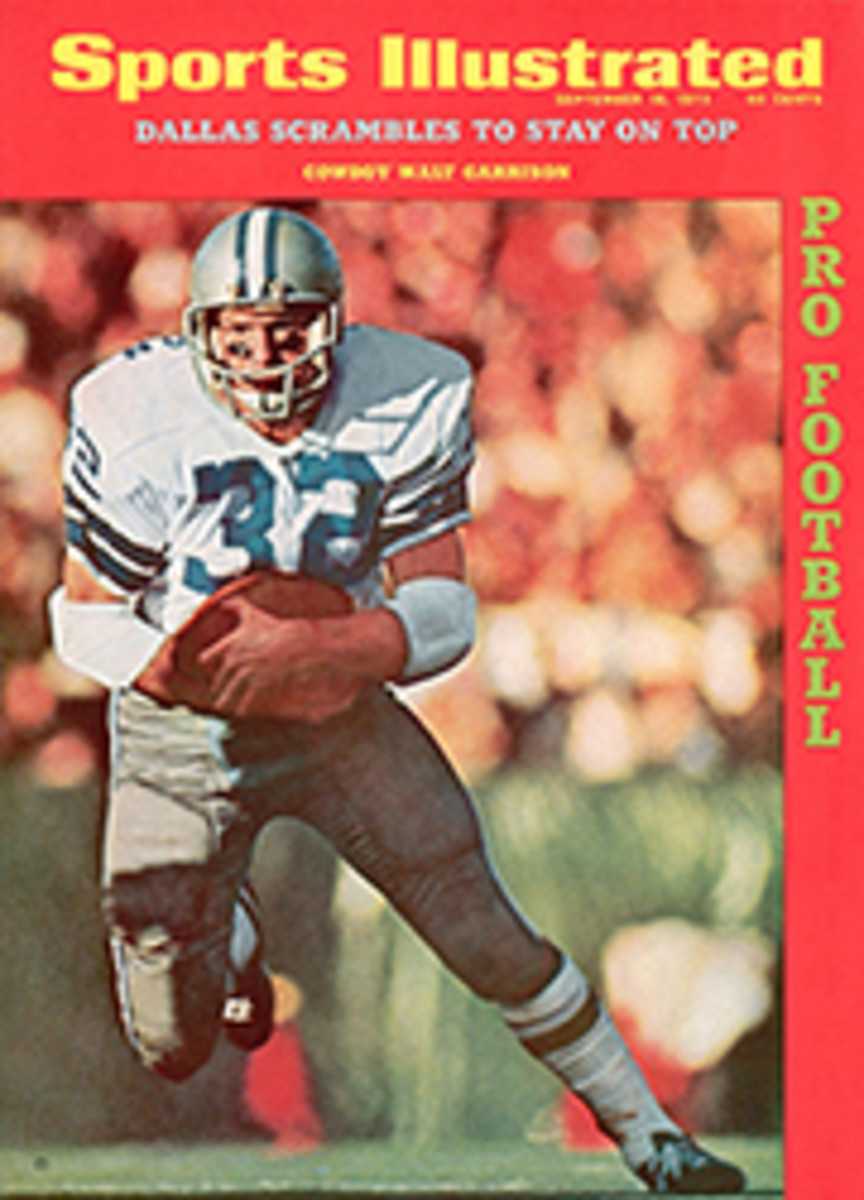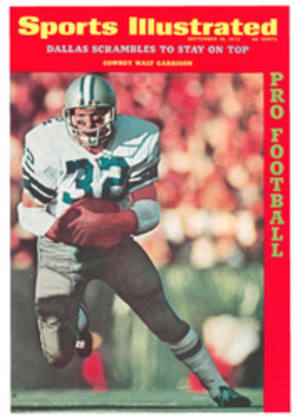
Two men on a horse—but one at a time
It was a pretty strange crowd that gathered outside of Alturas, Calif. for Levi's 2nd Annual Ride and Tie Race, but then a ride and tie race is hardly an everyday event to begin with. It is based on an old Western stratagem for coping with the problem of two men who find themselves with one horse and some distance to cover. One starts running and the other riding. The rider, after a certain number of miles, ties his horse and heads off on foot, thus giving the horse a rest until the first pedestrian catches up. The latter mounts and rides, passing his now-running buddy, later dismounting to tie the horse and take off on foot again. The performance is repeated until the destination is reached. Thus, in theory, on a 30-mile trip each person would be on foot for 15 miles and the horse, though he carried someone the entire distance, would have rest periods while tied.
Levi Strauss & Co. revived this activity as a competition in 1971, and this year 68 people showed up to compete for a variety of prizes: top winners could have managed to take home close to $3,000, more money than the stakes in most horse shows, providing they were wearing something made by Levi's. If they weren't, it was $1,000 less. So there they were, students and cowboys and some San Francisco firemen (one of whom had posed for a poster floating around, the one of a male nude upon a Victorian couch), college professors and girls, a truck driver, a wrestling champion, an Olympic gold medal winner (in rowing), a telephone installer, a sheet metal worker, a policeman cum judo expert, a timber feller, a fish rescuer and a nursing mother. They were paired into men's teams, women's teams, man-and-woman teams, a brother-and-sister team, a black-and-white team and a black team. The last consisted of the president and vice-president of the 10th Cavalry Buffalo Soldiers, Inc., representing the reactivation of a black unit created in 1866 ("The recruiting was somewhat easy, because of the advantages of being away from their slave masters and the adverse conditions that existed in those days," an explanatory bit of literature says of the original 10th). There was even a team of former modern pentathletes who, in the best tradition of their sport, arrived in Alturas just in time to go over the course and ride an unknown horse. As for clothes, what does one wear to ride and run some 30 miles over a mountain? The $1,000 Levi's, of course, in every color, some cut and slit to resemble track shorts, some with large circles snipped down the front for ventilation. Also, there were traditional track shorts with Levi's shirts, stretch knickers and even a pair of long bloomers—on 26-year-old Ken Williams. Footwear included boots, tennis shoes, track shoes worn with and without puttees or knee socks, and bare legs. Some of the men were bare-chested, some of the girls in bathing suits. There is no traditional outfit for the cross-country runner-horseman, although by the 3rd Annual Ride and Tie Race Levi's may have devised one.
This rich array of people and 34 horses arrived in a dry brown field and lined up between two trees for a shotgun start to their destination, Cedarville and the Cedarville Fair, 30 miles away on the other side of the Warner Range. They took off like a land-rush stampede, riders and runners in a dusty charge, complete with one loose horse that had bucked off its rider and was galloping wildly through the press of man and beast, bumping horses and spinning runners aside. The first of four veterinarian checks was about eight miles away, and some lost the race in that distance. One runner, intent on his footing, ran right by his tied horse and didn't realize it until he spotted his slower teammate ahead and had to run back. Another hitched his horse badly and it got loose: again, time wasted in retrieving.
The horses, all in all, received more tender loving care than the people. They were constantly checked for lameness and any of the assorted ills that befall that supposedly tough but in many ways fragile creature. "You can kill a horse in five miles," said one veterinarian in a pre-race lecture on the handling of the animals. The sponsors were being careful, since two horses had died the year before in the inaugural event. This time the animals all came through, though some of the humans didn't. A cross-country running coach was carried off with heat prostration, as was one member of a man-woman team—the man, it was; the girl and the horse finished.
The first horse to appear at the No. 1 vet check was a cross paint-quarter-horse mare, a part of the Chuck Stalley-Butch Alexander team. Butch had gone through earlier, and Chuck, who knew the mare a lot better than his partner did, took her through in a minimum of time and was off—the two college sophomores were never to lose the lead. They were followed by a congestion of horses and people, and there was the inevitable wait as, one by one, stragglers trailed through.
The next stage, just over the halfway point, involved a 3,100-foot climb to 7,500 feet. There, from the summit, was a view across Surprise Valley and Middle Alkali Lake to the sepia mountains of Nevada. Even the exhausted competitors, standing among the pines sipping water handed out by a nurse, took note of the panorama. A contestant came panting up to the water station. "What's your number?" asked Sheriff Lynn Harris, checking times. "Number one," the man said, "but that's not my condition or position." Learning what his placement along the line was, he took the bad news and shrugged, saying, "Well, we're just doing it for fun."
"It's not my idea of fun," commented a bystander, watching him gather himself together and take off again.
Far below in Cedarville the fair was under way, and the grandstand facing the half-mile track was filled, the people waiting for the rodeo to begin or for the first ride-and-tie contestants to cross the limed finish line on the track. The rules of the game said that it was not the first person over the line but the package, two humans, one horse. Bill Posedel, a 30-year-old San Francisco fireman (not the nude poster-poser), was the first to make the three-quarter lap around the track, but his teammates, 50-year-old John Holden and the horse, were nowhere in sight. Everyone expected them at any moment but it was Stalley and Alexander and the paint mare that strotted in while Posedel looked in vain; they crossed the line with a time of three hours and 22 minutes.
Congratulations were barely over when Ken (Bloomer Boy) Williams and Cary Brooks struggled onto the track, where Ken sagged and started to collapse. Cary quickly got him up on their gray Arabian and they finished less than 10 minutes behind the winners. Then John Holden arrived. Although he was the oldest contestant, it wasn't Holden that had delayed the team, it was the horse. It had slowed things down at a vet check, and somewhere along the line Posedel had out-fleet-footed it.
By the time the last gaspers got in, determined to finish just because the finish line was there, the winners had bedded down the horse and were showing off their bruises. Stalley and Alexander, in shorts, sported blood blisters and strange ocher marks on the insides of their legs, the consequence of riding an English saddle with no protection. The pain, fortunately, seemed incidental to the euphoria. The two had been camping out on the Cedarville side of the mountain for a week, working the mare over the trail backwards. "It takes two things to win this race," said Stalley, who finished third last year with another partner. "Two good riders and a good horse. One fast runner and one slow one won't do it. It has to be a smooth operation." The only lump in theirs was a bad point where Alexander, who had run more of the first part of the race than Stalley, got cramps. Stalley realized it in time, and turned back to give him the horse.
The No. 2 pair, Williams and Brooks, was seventh through the first veterinarian check and did a great job of catching up on Stalley and Alexander, but they had some similar problems. Williams, a student working on his master's degree in economics, who had learned to ride only three months before, and Brooks, a real estate salesman, had their own strategy worked out before the race, but it came near failing when Brooks got sick. "The trouble was, Ken decided we should have Carnation Instant Breakfast," Brooks explained, "but he didn't know I hated chocolate, and that's what he got. It took me about 13 miles to lose it. But I feel Jesus is the biggest power and help. I got through because I prayed a lot."
He went on to tell what had happened the night before when their horse, named Prince Kolaf, was fussing at flies and got his foot caught in the halter; he went down thrashing and hurt himself. "He was all scratched and swollen, but we stood him in the creek and I prayed. That's how it happened he was all right, it's the power of prayer," Brooks said. "Jesus did it."
Formidable contenders, obviously. Stalley and Alexander will have their work cut out for them if next year is a better one for flies and if Williams and Brooks turn up with strawberry Instant Breakfast instead of chocolate.
PHOTO
THEY'RE OFF AND RUNNING, OR RIDING, AS THE CASE MAY BE, IN A CONTEST WHERE OBVIOUSLY NEATNESS DOESN'T COUNT

